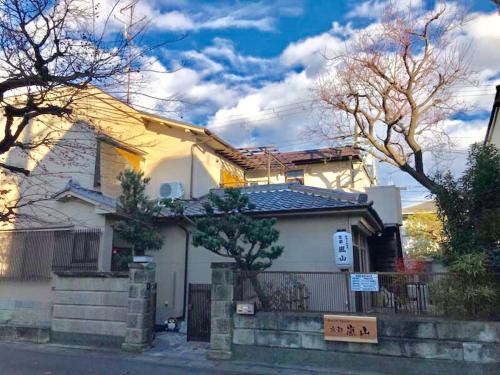Ninna-ji Temple
menuMenu
An ancient temple with vast palace gardens, registered as a World Heritage site. In spring, the late-blooming Omuro cherry blossoms burst into bloom, and in autumn, the grounds are ablaze with fiery red leaves.














Highlights
- Registered as a World Heritage site, part of the Historic Monuments of Ancient Kyoto
- The late-blooming Omuro cherry blossoms bloom spectacularly in spring
- Autumn brings breathtaking foliage, painting the grounds in fiery red
- Vast palace gardens, inheriting the aristocratic garden style of the Heian period
- Numerous highlights, including the National Treasure Kondo (Golden Hall) and five-storied pagoda
Basic Information
- Address
- 33 Omuro Ouchi, Ukyo-ku, Kyoto, Kyoto Prefecture Search for tourist attractions in Kyoto
- Access
- Approximately 30 minutes by Kyoto City Bus No. 59 from Kyoto Station. Get off at Ninna-ji Temple bus stop. Show route
- Op.Hours
- 9:00 AM to 5:00 PM (Last entry 4:30 PM)
- Cld.Days
- No holidays
- Fee
- Adults: ¥600, High school students: ¥400, Junior high school students and younger: Free
- INFO
- The grounds are extensive, so comfortable walking shoes are recommended. The Imperial Palace garden has an uneven terrain, making it difficult to navigate with a stroller. Several paid parking lots are available.
Overview
Recommended nearby attractions
Jingo-ji Temple

Jingo-ji Temple is a historically significant temple of the Tendai sect, established in the early Heian period by Saicho. Registered as a World Heritage site, it's a must-see Kyoto destination where you can experience history and nature amidst beautiful scenery throughout the year.
Hōkyō-ji Temple

Visit a temple with ties to Ashikaga Yoshimitsu, including a National Treasure writing room, tea room, and beautiful gardens.
Hongan-ji Temple ( Nishi Hongan-ji Temple)

The breathtaking scale of this World Heritage site will leave you speechless!
Kyo-o Gokoku-ji Temple (Toji Temple)

Toji Temple, a World Heritage site, is a Shingon Buddhist temple with deep connections to Kobo Daishi Kukai. Its approximately 55-meter-tall five-story pagoda is a renowned symbol of Kyoto.
Tenryu-ji Temple

Tenryu-ji Temple is a Zen temple boasting a magnificent Sogenchi Garden that makes use of the beautiful natural scenery of Arashiyama as a backdrop. Enjoy a harmonious landscape of history and nature, registered as a World Heritage site.
Daitoku-ji Temple

With its sprawling grounds dotted with sub-temples, serene karesansui (dry landscape) gardens, and historically and culturally significant structures, Daitoku-ji is a must-see Zen temple representing the best of Kyoto.
Shōkoku-ji Temple

A historic temple established by Ashikaga Yoshimitsu. Don't miss the "crying dragon" painted on the ceiling of the Hōdō!
Daifuku-koji Temple

Explore a historic temple, including its main hall and multi-storied pagoda, both designated as Important Cultural Properties.
Daiho-onji Temple

The main hall, the oldest existing structure in Kyoto, built in the Kamakura period, is a designated National Treasure and a truly impressive sight.
Chion-in Temple

Chion-in is the head temple of the Jodo sect, boasting a magnificent gate and a National Treasure Main Hall (Omigedo).
Nearby Hotels
Garden Villa Denshin-An

Hanazono Kaikan

Royce Hanazono

Kyoto Utano Youth Hostel

RYOKAN YAMAZAKI

guest house kyorakuya kinkakuji

Guesthouse Kyoto Arashiyama

Royce Enmachi/Enmachi St 5minutes

Guest House Sakurakomachi

LJ Inn 201-Uzumasa Arashiyama free Wi-Fi & 2 bike

